
Conrad Celtes was a German Renaissance humanist scholar and poet of the German Renaissance born in Franconia. He led the theatrical performances at the Viennese court and reformed the syllabi.
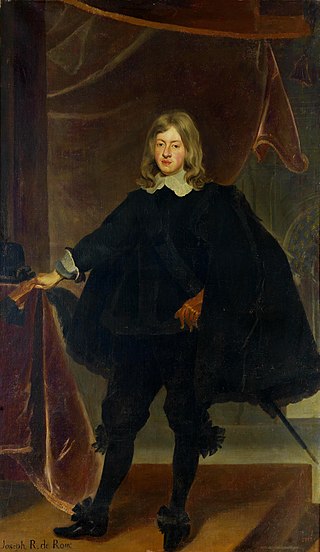
Ferdinand IV was made and crowned King of Bohemia in 1646, King of Hungary and Croatia in 1647, and King of the Romans on 31 May 1653. He also served as Duke of Cieszyn.

Leopold V, Archduke of Further Austria was the son of Archduke Charles II of Inner Austria, and the younger brother of Emperor Ferdinand II, father of Ferdinand Charles, Archduke of Further Austria. He was Bishop of Passau and of Strasbourg, until he resigned to get married, and Archduke of Further Austria including Tirol.
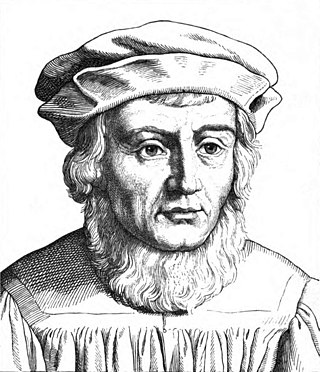
Johann Georg Turmair, known by the pen name Johannes Aventinus or Aventin, was a Bavarian Renaissance humanist historian and philologist. He authored the 1523 Annals of Bavaria, a valuable record of the early history of Germany.
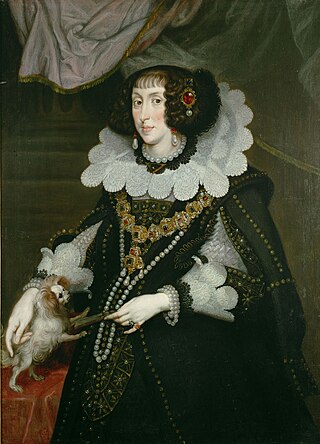
Archduchess Maria Anna of Austria, was a German regent, Electress of Bavaria by marriage to Maximilian I, Elector of Bavaria, and co-regent of the Electorate of Bavaria during the minority of her son Ferdinand Maria, Elector of Bavaria from 1651 to 1654.
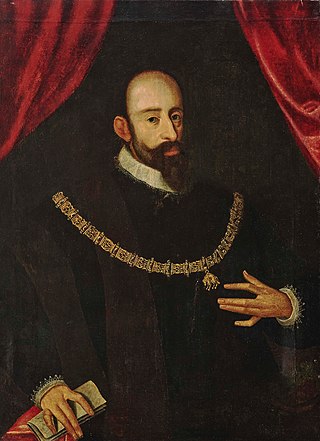
William V, called the Pious, was Duke of Bavaria from 1579 to 1597.

Archduke Leopold Wilhelm of Austria, younger brother of Emperor Ferdinand III, was an Austrian soldier, administrator and patron of the arts.

Maria Anna of Bavaria was a politically active Archduchess of Austria by her marriage to Archduke Charles II of Austria. She played an important role in the Counter-Reformation in Austria.
Andreas Stöberl, better known by his latinised name Andreas Stiborius (Boius), was a German humanist astronomer, mathematician, and theologian working mainly at the University of Vienna.

Johannes Cuspinianus, born Johan Spießhaymer, was a German-Austrian humanist, scientist, diplomat, and historian. Born in Spießheim near Schweinfurt in Franconia, of which Cuspinianus is a Latinization, he studied in Leipzig and Würzburg. He went to Vienna in 1492 and became a professor of medicine at the University of Vienna. He became Rector of the university in 1500 and also served as Royal Superintendent until his death.

Anna of Bohemia and Hungary, sometimes known as Anna Jagellonica, was Queen of Germany, Bohemia, and Hungary and Archduchess of Austria as the wife of King Ferdinand I.

Ernest of Bavaria was Prince-elector-archbishop of the Archbishopric of Cologne from 1583 to 1612 as successor of the expelled Gebhard Truchsess von Waldburg. He was also bishop of Münster, Hildesheim, Freising and Liège.

Maria Magdalena, Archduchess of Austria was a governor of Tyrol and daughter of Emperor Leopold I and his third wife Eleonore Magdalene of the Palatinate. She died unmarried.

Anna of Austria, a member of the Imperial House of Habsburg, was Duchess of Bavaria from 1550 until 1579, by her marriage with Duke Albert V.

Ferdinand of Bavaria was born 20 January 1550, in Landshut, in the Duchy of Bavaria, and died 30 January 1608 in Munich, at the age of 58. He was the second surviving son of Albert V, Duke of Bavaria, and his wife Archduchess Anna of Austria, and consequently was prepared for a military career. Ferdinand is also known for the two extraordinary diaries he kept, one as fifteen-year-old boy on a journey from Munich to Florence, for his aunt's wedding, and a second journey to Florence, this time as young and experienced man of affairs.
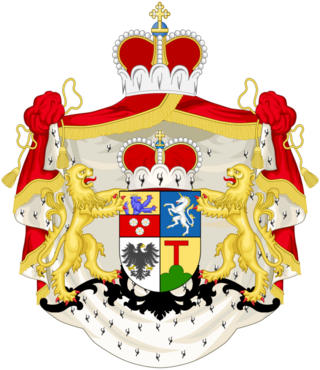
The House of Henckel-Donnersmarck is an old Austro-German noble family that originated in the former region of Spiš in Upper Hungary, now in Slovakia. The founder of the family was Henckel de Quintoforo in the 14/15th century. The original seat of the family was in Donnersmarck in an Austrian part of what is present day Slovakia. In 1629, the family moved to Silesia, an Austrian/German state that was later annexed by Poland in 1945.

Archduchess Gregoria Maximiliana of Austria was a member of the House of Habsburg.

Maximilian Ernest of Austria, was an Austrian prince member of the House of Habsburg and by birth Archduke of Austria.

Charles of Austria, nicknamed the Posthumous, a member of the Imperial House of Habsburg, was Prince-Bishop of Wrocław (Breslau) from 1608, Prince-Bishop of Brixen from 1613, and Grand Master of the Teutonic Order from 1618 until his death. In 1621 he also received the Bohemian County of Kladsko as a fief from the hands of his brother, Emperor Ferdinand II.

Hieronymus Baumgartner, also von Paumgartner or Baumgärtner was a Bürgermeister, and a major contributor to the early Reformation.




















